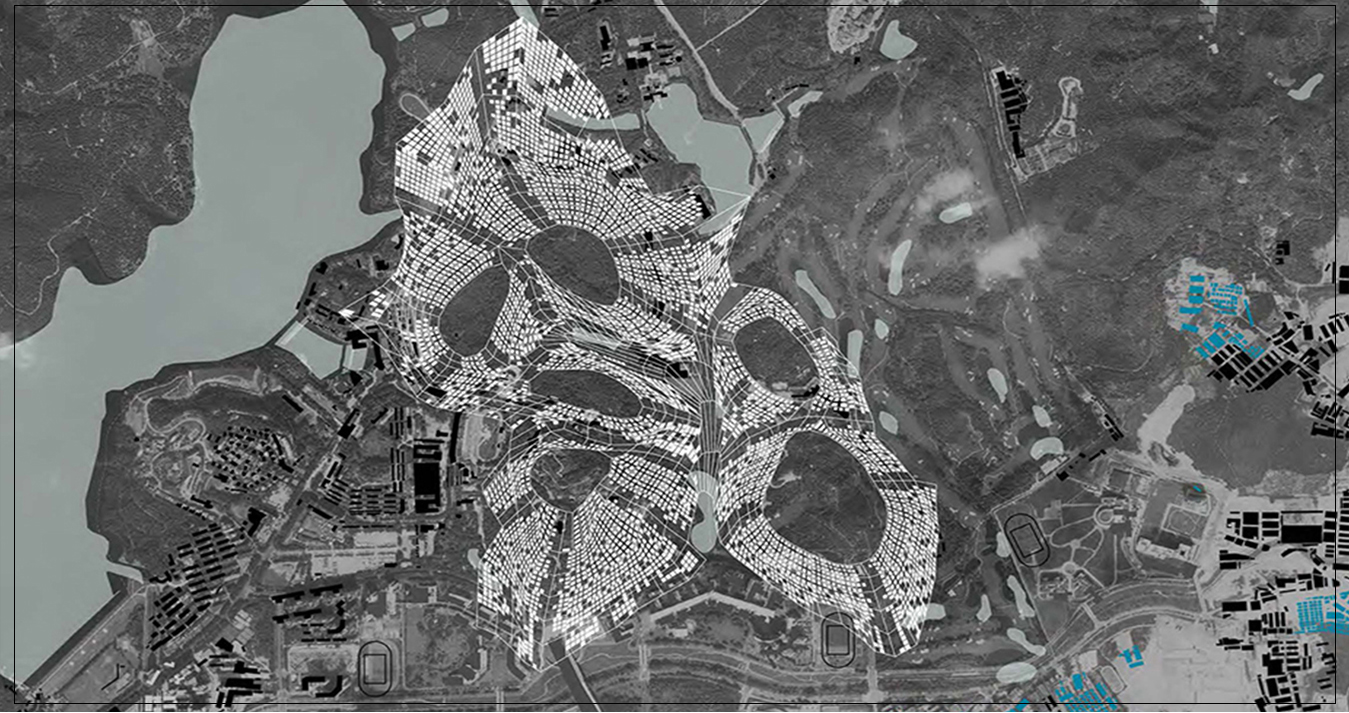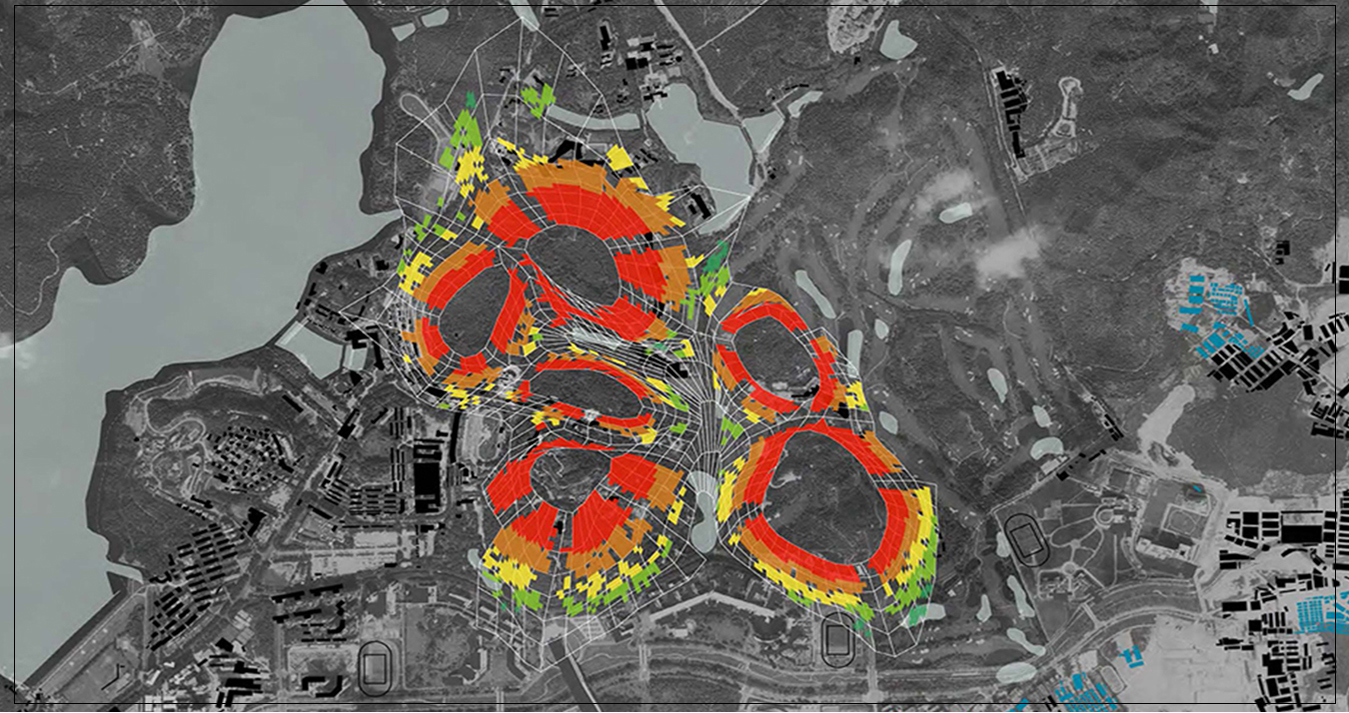Synthesized City
The project explores the non-physical interface between two metropolitan zones: Shenzhen and Hong Kong. An analy-sis of development in the two zones and the resulting imbal-ancesreveals the importance of the university. This offers great potential to enhance social exchange between these two zones.
The concept of the proposed ‘University Town’ emerged in English-speaking countries, such as Oxford in England and Harvard in the USA. The university town idea was successfully introduced to China in the 1990s. More than fifty new univer-sitytowns have been constructed on the periphery of megaci-ties in China over the past two decades to integrate education resources, and also to develop collective sites for the produc-tionof knowledge.
Like all university towns in China, the University Town of Shen-zhenhas economically benefitted the city and villages around the campus. However, it also brings imbalanced development and separation between these two zones. In order to propel the transformation of Shenzhen from a low-tech manufactur-ingzone into an area of knowledge production, the interaction of the floating population between university and village is taken as the main focus to construct a new hypothetical sys-temto integrate learning and living.
- [year] 2013
- [Credits] Miao Zhang, Enriqueta Llabres, Eduardo Rico
Synthesized City
The project explores the non-physical interface between two metropolitan zones: Shenzhen and Hong Kong. An analy-sis of development in the two zones and the resulting imbal-ancesreveals the importance of the university. This offers great potential to enhance social exchange between these two zones.
The concept of the proposed ‘University Town’ emerged in English-speaking countries, such as Oxford in England and Harvard in the USA. The university town idea was successfully introduced to China in the 1990s. More than fifty new univer-sitytowns have been constructed on the periphery of megaci-ties in China over the past two decades to integrate education resources, and also to develop collective sites for the produc-tionof knowledge.
Like all university towns in China, the University Town of Shen-zhenhas economically benefitted the city and villages around the campus. However, it also brings imbalanced development and separation between these two zones. In order to propel the transformation of Shenzhen from a low-tech manufactur-ingzone into an area of knowledge production, the interaction of the floating population between university and village is taken as the main focus to construct a new hypothetical sys-temto integrate learning and living.









